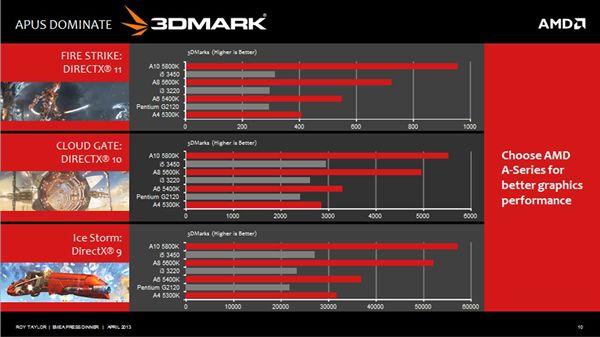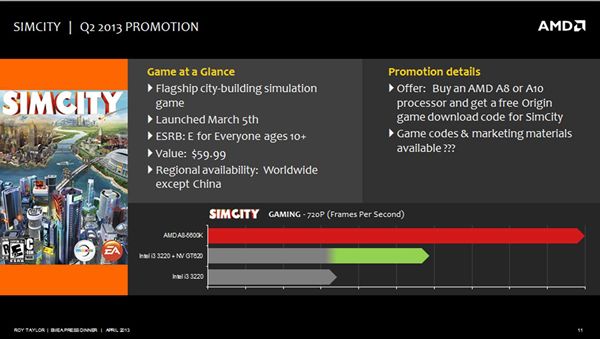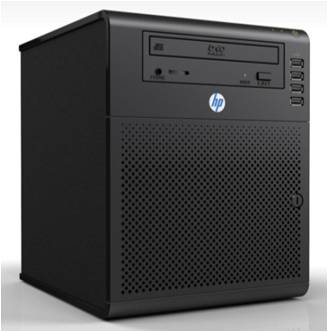 AMD might be on the verge of its biggest strategic shift in ages, as it starts to embrace ARM processors and more frugal chips. The company hopes to make as much as half of its money from console chips and ultra-low power processors by 2016. That is on top of ARM-based server chips which are already in the works.
AMD might be on the verge of its biggest strategic shift in ages, as it starts to embrace ARM processors and more frugal chips. The company hopes to make as much as half of its money from console chips and ultra-low power processors by 2016. That is on top of ARM-based server chips which are already in the works.
At the moment, AMD generates the vast majority of its revenue from x86 processors and GPUs, but this year it is expected to ship millions of custom APUs for gaming consoles. On Tuesday the company launched a range of embedded x86 chips based on the new Jaguar core, but it also hinted at upcoming embedded chips based on ARM designs.
AMD already made it clear that it intends to use upcoming 64-bit ARM cores in its server parts, but the decision to design embedded APUs with ARM cores could have far reaching implications. In technical terms, these chips will have a lot more in common with consumer application processors than server chips. They are also expected to feature the latest generation Radeon graphics. In other words, AMD will develop ARM based SoCs, but it is still unclear whether it will target the consumer market.
Several years ago AMD sold its Imageon mobile graphics division to Qualcomm, and Qualcomm put it to good use, churning out millions of mobile SoCs with Adreno graphics, courtesy of AMD IP. However, AMD insists that it could catch up with relative ease.
Sasa Marinkovic, AMD’s Technology Marketing Lead, told Forbes that chip architecture at the time of the Imageon sale was full of bottlenecks and it has moved along since then.
“We sold some graphics IP, but we didn’t forget how to build it,” he said.
AMD already has some x86 designs capable of hitting sub-5W thermal envelopes required by tablet manufacturers, such as the 4.5W Temash SoC. However, ARM based chips could offer even better power efficiency and end up with sub-3W TDPs.
On the console front things are looking even better. AMD expects sales of custom APUs for the Playstation 4 and next-gen Xbox to account for 20 percent of its revenue by the end of the year. Similar chips based on the Jaguar core are coming to the consumer market as well.











